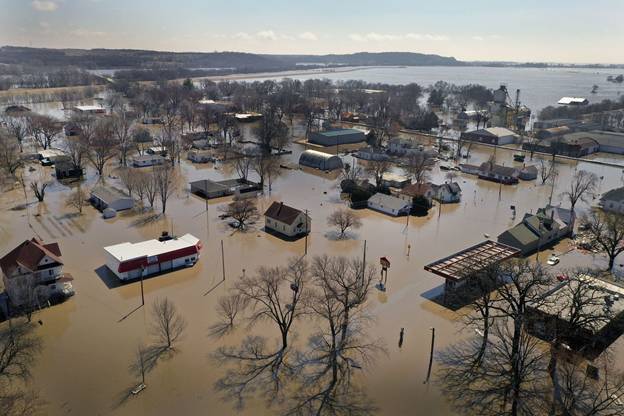A record flood in the American Midwest has killed at least four people, displaced thousands, and caused an estimated $3 billion in property damage.
The Missouri River Basinrose to record heights and broke its banks after hard winter rain couldn’t be absorbed into the frozen soil. And after the Spencer Dam was destroyed by the floodwaters, the U.S. Army Corps of Engineers was forced to open the Gavins Point Dam downstream to prevent it from being destroyed in turn.
Grief and frustration linger in the flooded towns, but it’s difficult to know what the Army Corps of Engineers could have done differently. A decades-old flood control system coupled with recent extreme weather meant that it was difficult for the agency to make any better choices.

Hamburg, Iowa, was one of many Midwestern towns to be flooded by the rising Missouri. (Image courtesy of Scott Olson/Getty Images.)
On March 13, a bomb cyclone hit the upper Midwest, and the low pressure drew in warm, wet air from the Gulf of Mexico. The influx of air melted about a foot of snow and also brought between 1 and 3 inches of precipitation.
Both the rain and the meltwater turned into runoff, draining into the Missouri River Basin. “In this case, it’s not so much the amount of rain, but nothing can take it in because everything is frozen,” Nebraska farmer Kenny Reinke told Progressive Farmer. “I’ve never seen anything like this.”
The runoff turned the Niobrara River, one of the tributaries feeding the…

